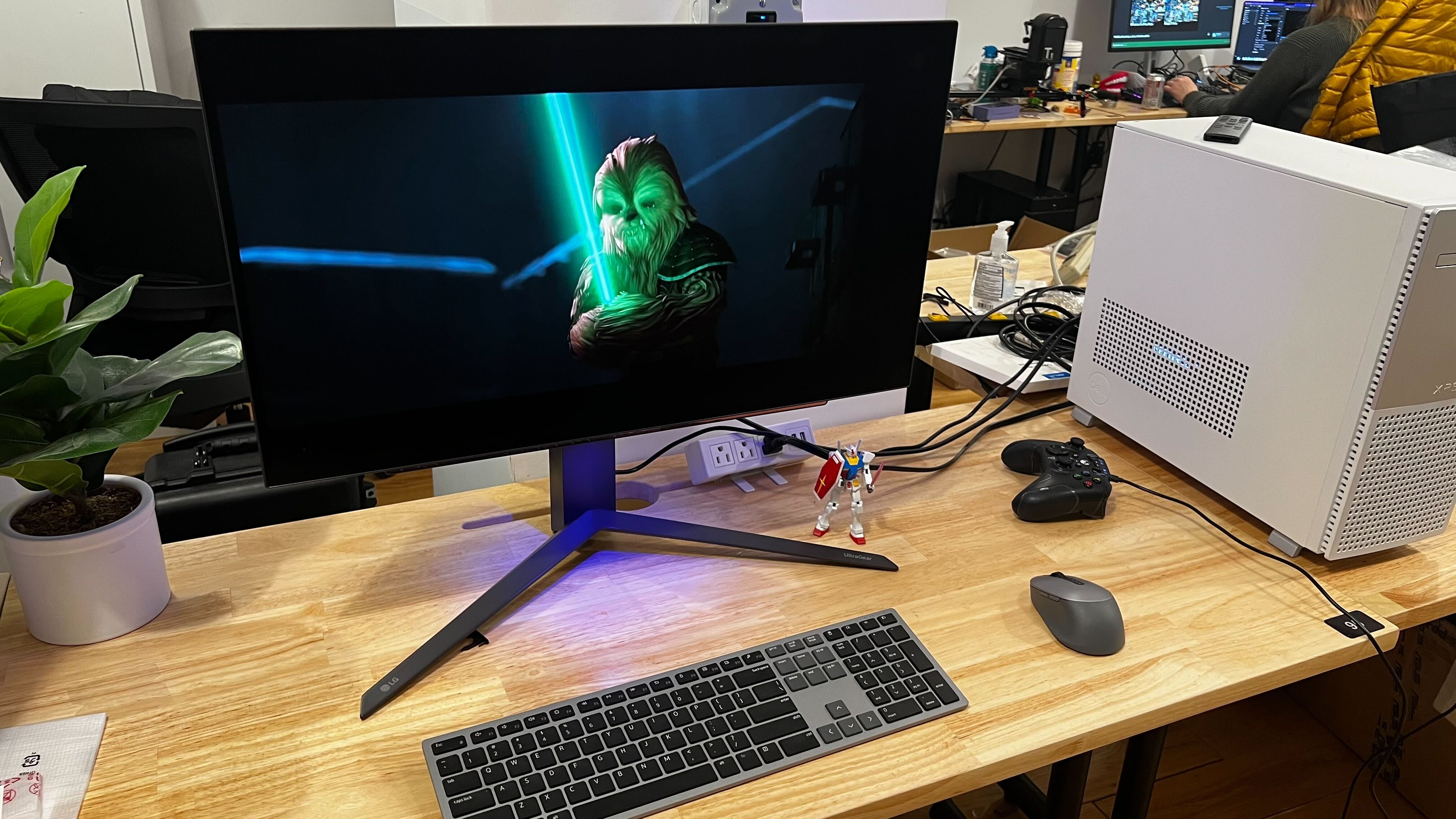Our Verdict
The LG 27GR95QE-B is a stellar display that makes 1440p again the PC gaming sweet spot due to its high 240Hz refresh rate and fantastic latency. However, its low overall brightness and lack of onboard settings keep it from being great.
For
- Stunning visual quality
- Great latency
- 1440p 240Hz OLED
Against
- Remote control
- Low overall brightness
PC Gamer's got your back
Who doesn't love a 1080p screen with a 500Hz refresh rate or a massive 4K display at 120Hz? One resolution that seems like it's been left behind despite being a favorite among PC gamers is 1440p. Enter LG UltraGear 27GR95QE-B, one of the first 1440p 240Hz OLED gaming monitors to hit the market, and it's likely to turn some heads.
This UltraGear offers a wildly fast .03ms response rate. It's a gorgeous monitor that's found the perfect blend of speed and performance with insane picture quality. The most impressive bit? It's only $1,000. Yeah, that's a lot of money for a 27-inch 1440p display, but once you start rattling off features and specs, the price point is pretty competitive when compared to other similar OLEDs coming out soon.
The 240Hz refresh feels like a future-proofing, especially with this new generation of Nvidia and AMD GPUs just hitting the market. 1440p has long been the sweet spot for PC gaming; while 240Hz and 360Hz 1440p monitors do exist, this is our first time seeing 240Hz 1440p on an OLED panel.
I actually got to check out the LG UltraGear 27GR95QE-B alongside its massive 45-inch curvy (and more expensive) cousin, the 45GR95QE. I was pretty impressed with its performance when a couple of Evil Genius pros showcased its high refresh rate and low latency in a few matches of Valorant. Now that I spent a fair amount of time with the UltraGear its speed and latency were something else. OLED's advantage over other panel types for competitive gamers is obvious when you see it in action. If you play competitively, this is the monitor you want.
Screen size: 26-inch
Resolution: 2560 x 1440
Brightness: 206 nits peak brightness
Response time: 0.03ms
Refresh rate: 240Hz
Panel type: OLED
Contrast ratio: 1,500,000:1
Features: 98.5% DCI-P3, adaptive sync, 1x DisplayPort 1.4, 2x HDMI 2.1, 1x USB Type-C, 1x USB 3.0, optical port, remote, HDR10, PiP
Price: $999
I can't overstate how incredible games look on this monitor. I've been playing some of the new DLC for Marvel's Midnight Suns, and I love seeing details on Blade and Iron Man's futuristic armor sets and the swirl of stunning particles when a Hydra soldier gets smashed to smithereens. I've also been drudging through God of War, and the frozen realms filled with murderous elves have never looked better.
Speaking of Fortnite, playing it 240Hz at 1440p is a little weird at first, but after a couple of matches, there's no other way I want to play that game. Even if you do not have the hardware to hit 240fps. Let's face it, 240Hz might be overkill for many of your favorite non-shooty-bang-bang games.
I really do appreciate that you could have speed or picture quality, or both. So even if you're playing Valorant at the highest frame rate possible, you can still take advantage of how beautiful most games look, no matter the type. As cheesy as it sounds, watching the sunset in New York City while sitting atop the Empire State Building in Spider-Man: Miles Morales was quite a sight.
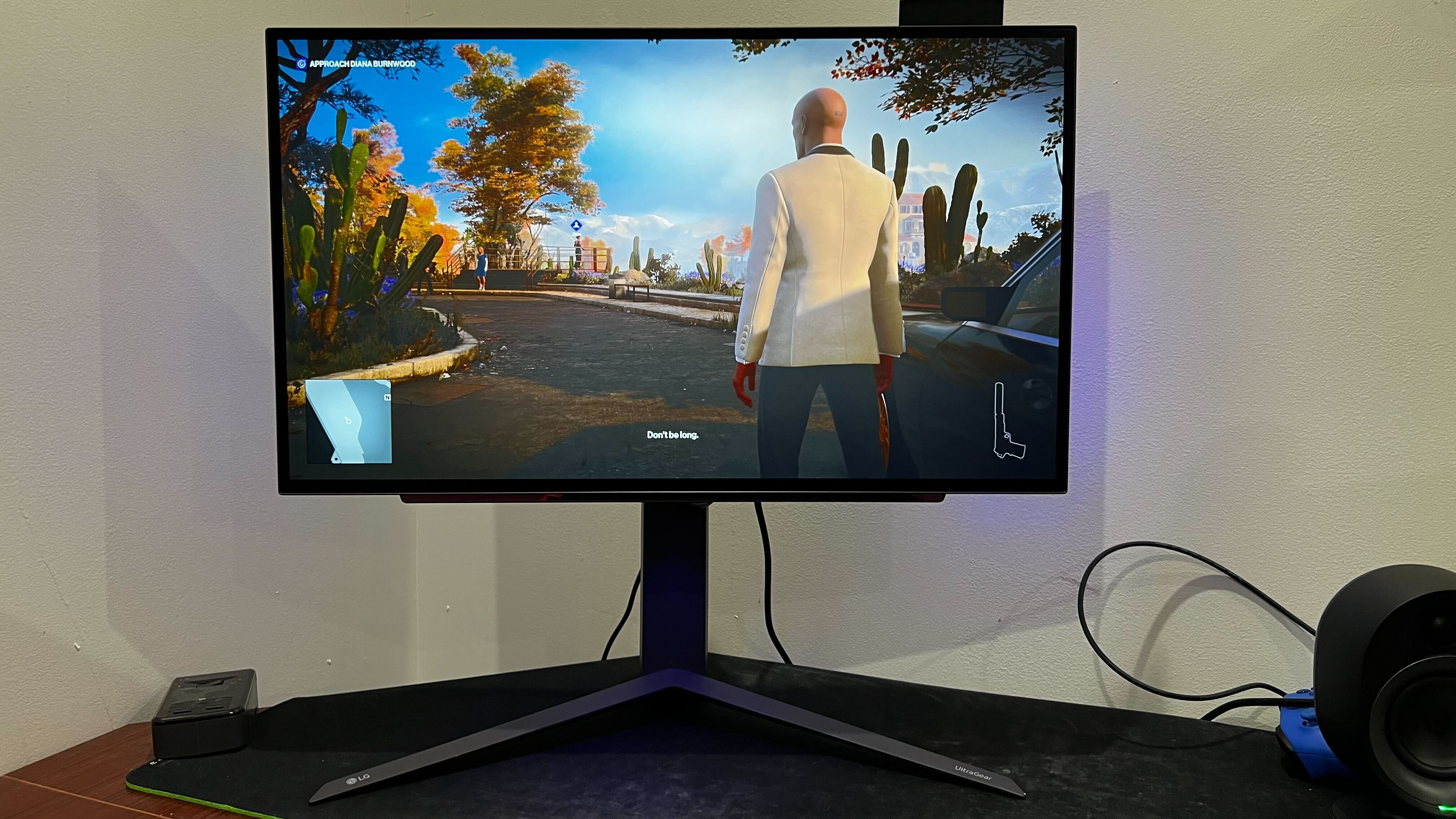
As much as I am impressed by the picture quality, the LG can't escape the common problem that plagues some OLED gaming monitors: brightness. In my testing, the OLED's non-HDR peak brightness sits just above 200 nits which is frankly abysmal. LG claims you can get around 800 nits with HDR on, but will only apply to small, bright objects. So, it will be gaming-relevant, but you can't expect anything close to the brightness you'd get from a screen that can actually do 800 nits full screen.
The lack of brightness became noticeable in dark areas in games when I played with the lights on during the day. I've been playing through Dead Space Remake and often squinted through dark corridors. It also didn't help in shooters like Fortnite, or The Finals playtest, where nighttime levels proved extra difficult to spot enemies in the distance. If you play in a darker room, the lower brightness is manageable.
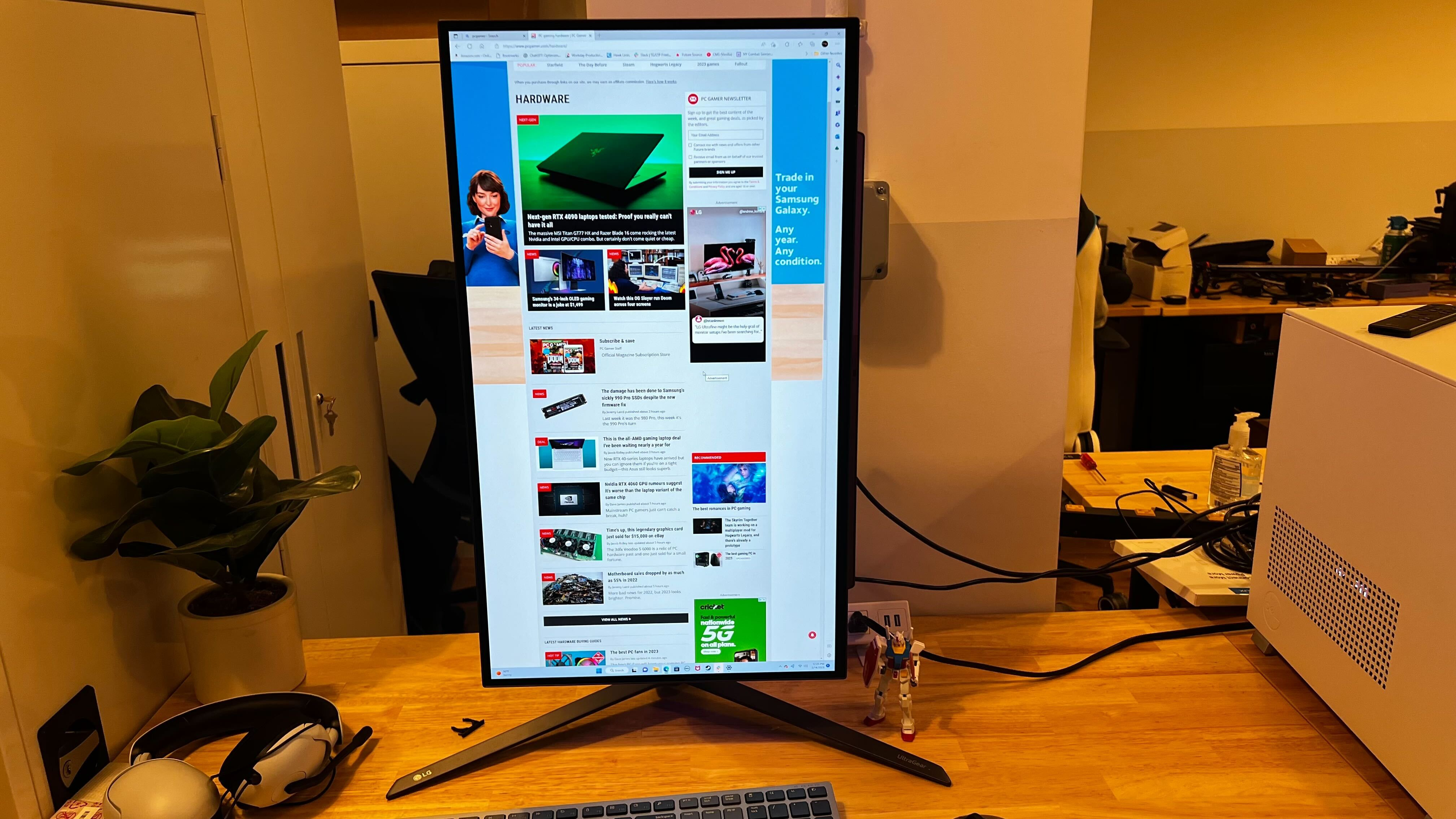
OLED panels aren't known for their brightness compared to other panel types, but this is low for an OLED, where the average sits around 250-300 nits. For example, the Alienware 34 OLED monitor does about 250 nits, and it's by far the best OLED gaming monitor on the market at the moment. It does get a little brighter if you switch to reader mode, which makes sense since reading text on a screen with low brightness can strain the eyes.
Another problem I often found is that the HDR can be a little inconsistent, and I found that it tended to oversaturate the colors in a distracting way. I left it off because I would much rather play with good color on a darker screen than be too bright and blown out.
Since it is an OLED display, you do run the risk of burn-in if static images stay on the screen over long periods. However, LG seems to have a handle on this. So much so that they've recently started talking smack about Samsung's burn-in issues. Thankfully, LG uses many of the same techniques as it does on its OLED TVs to prevent burn-in, such as automatic pixel cleaning as you shut the monitor after a long session.
Another small gripe is a lot of the monitor's features are handled through the remote. I'm trying to eliminate clutter from my life and now I have a remote to keep track of. You can do a few things on the monitor via a little knob on the bottom, like change inputs, volume, and brightness controls.
Design-wise not much has changed from previous UltraGear monitors, which isn't bad. You can rotate it to portrait mode, and it's got a pair of USB and HDMI ports. I like the cable caught in the back and the thin display bezels. Console gamers will be happy to see that these are HDMI 2.1 ports so you can play games at 120Hz, which is always welcome. There's no speaker, but you have an optical part that you can plug into a soundbar.
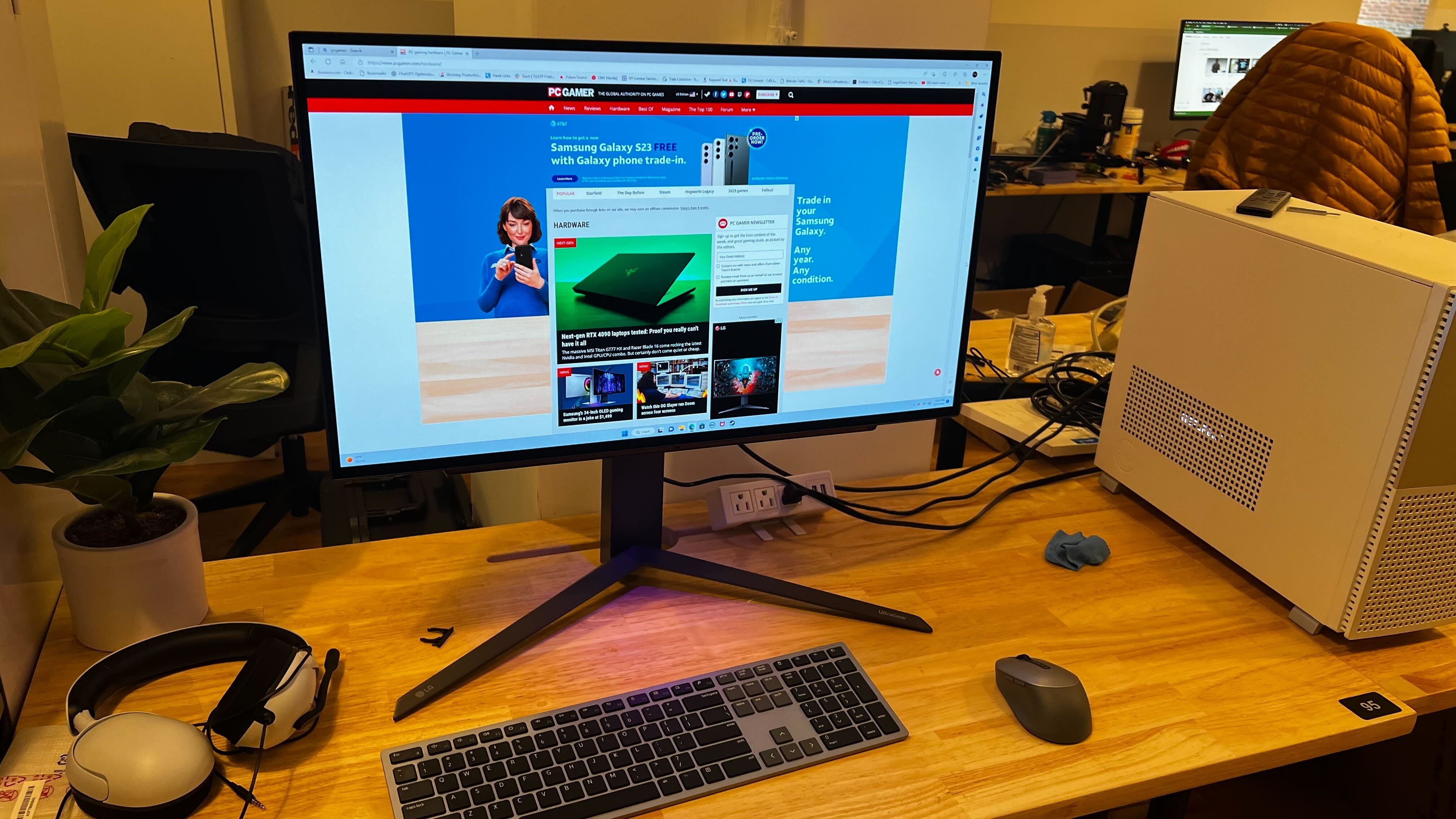
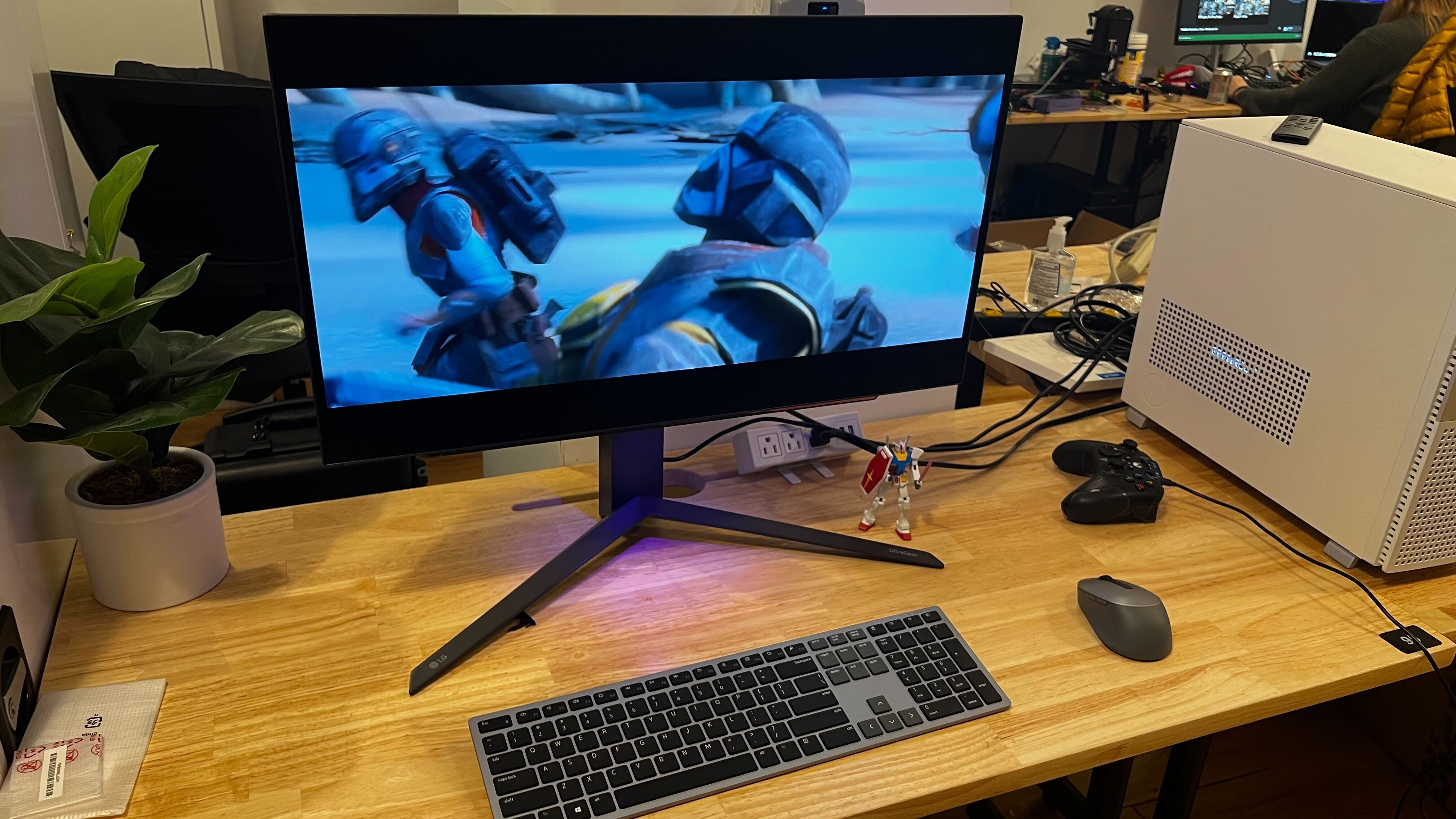
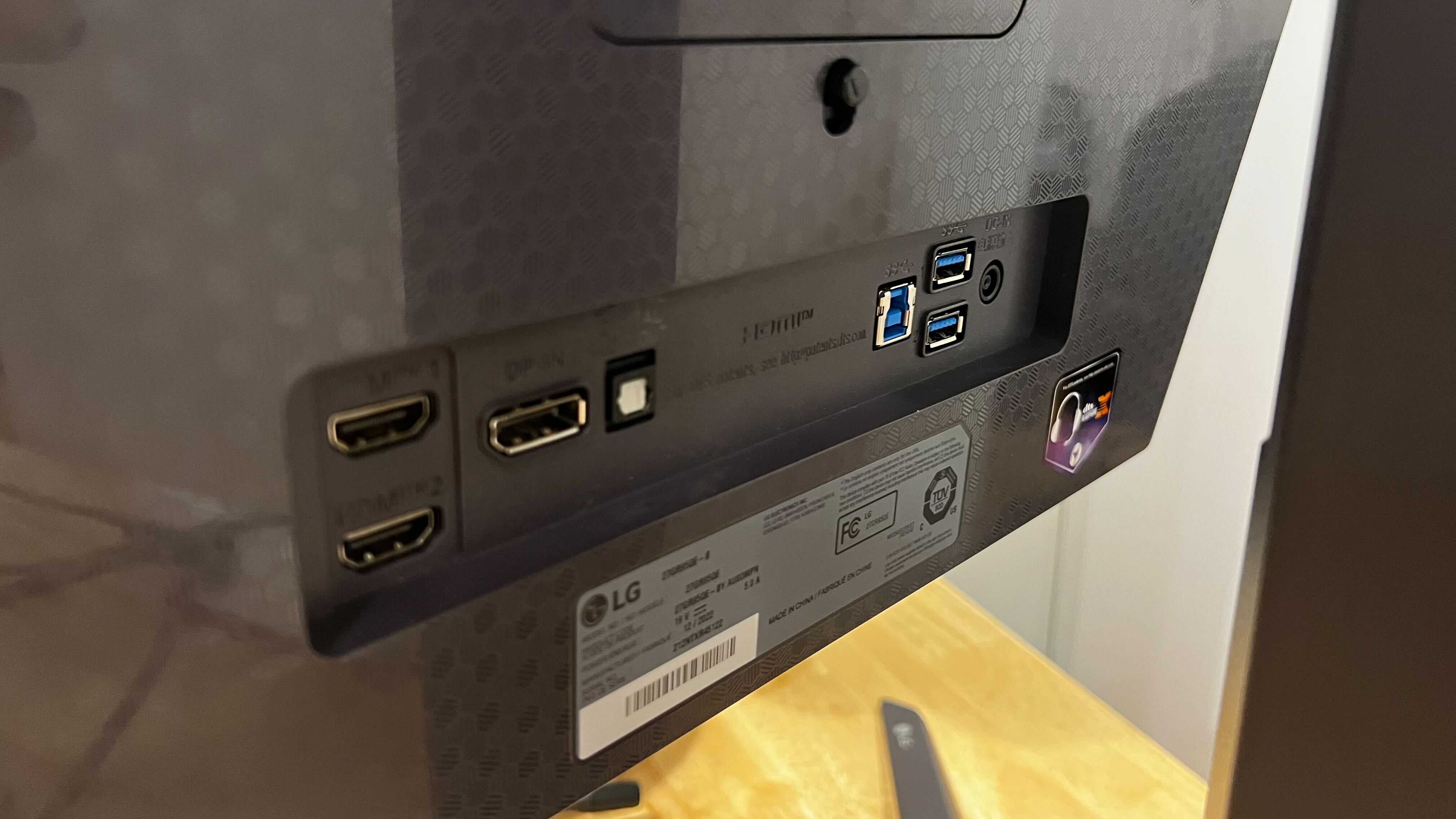
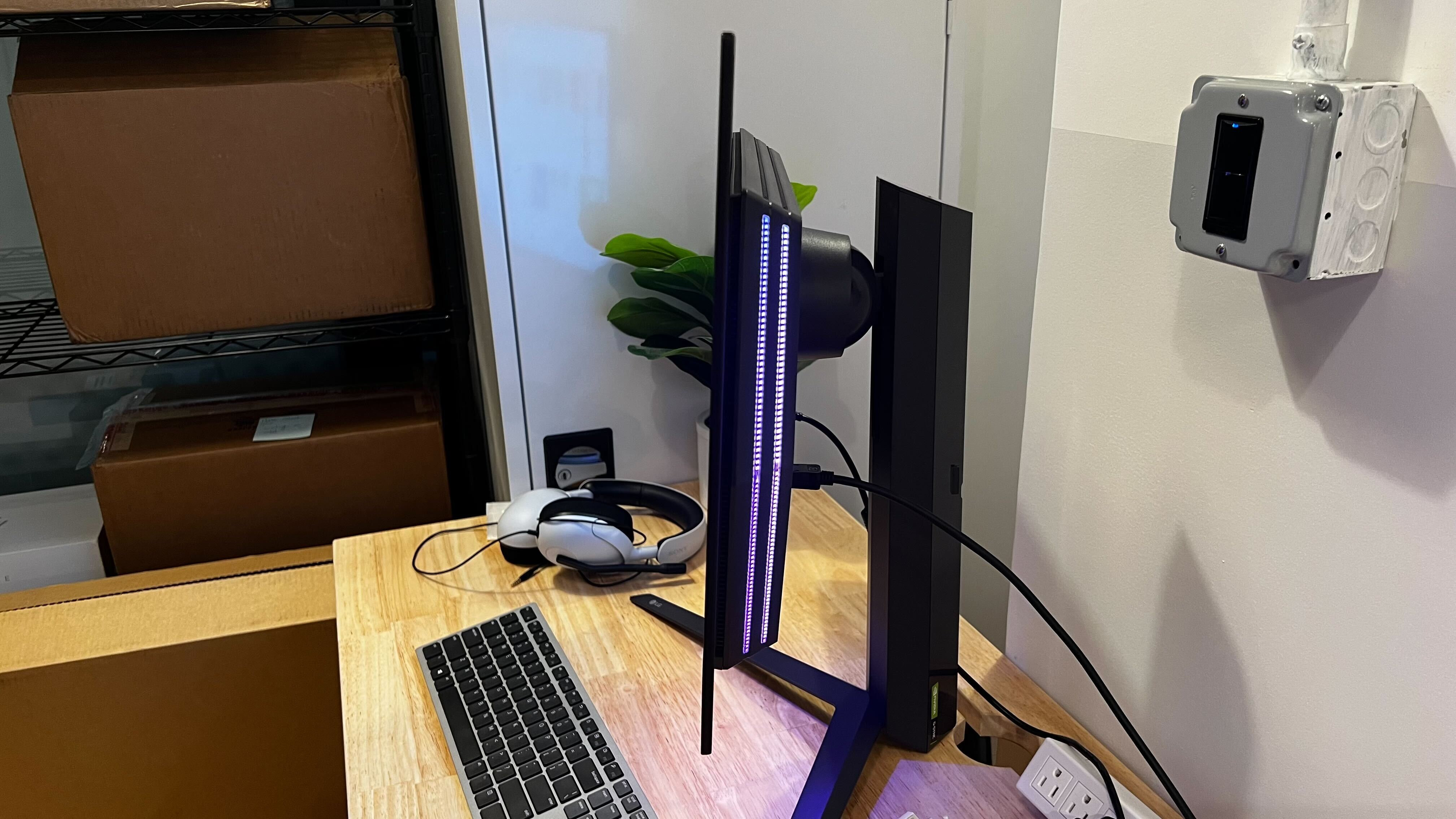
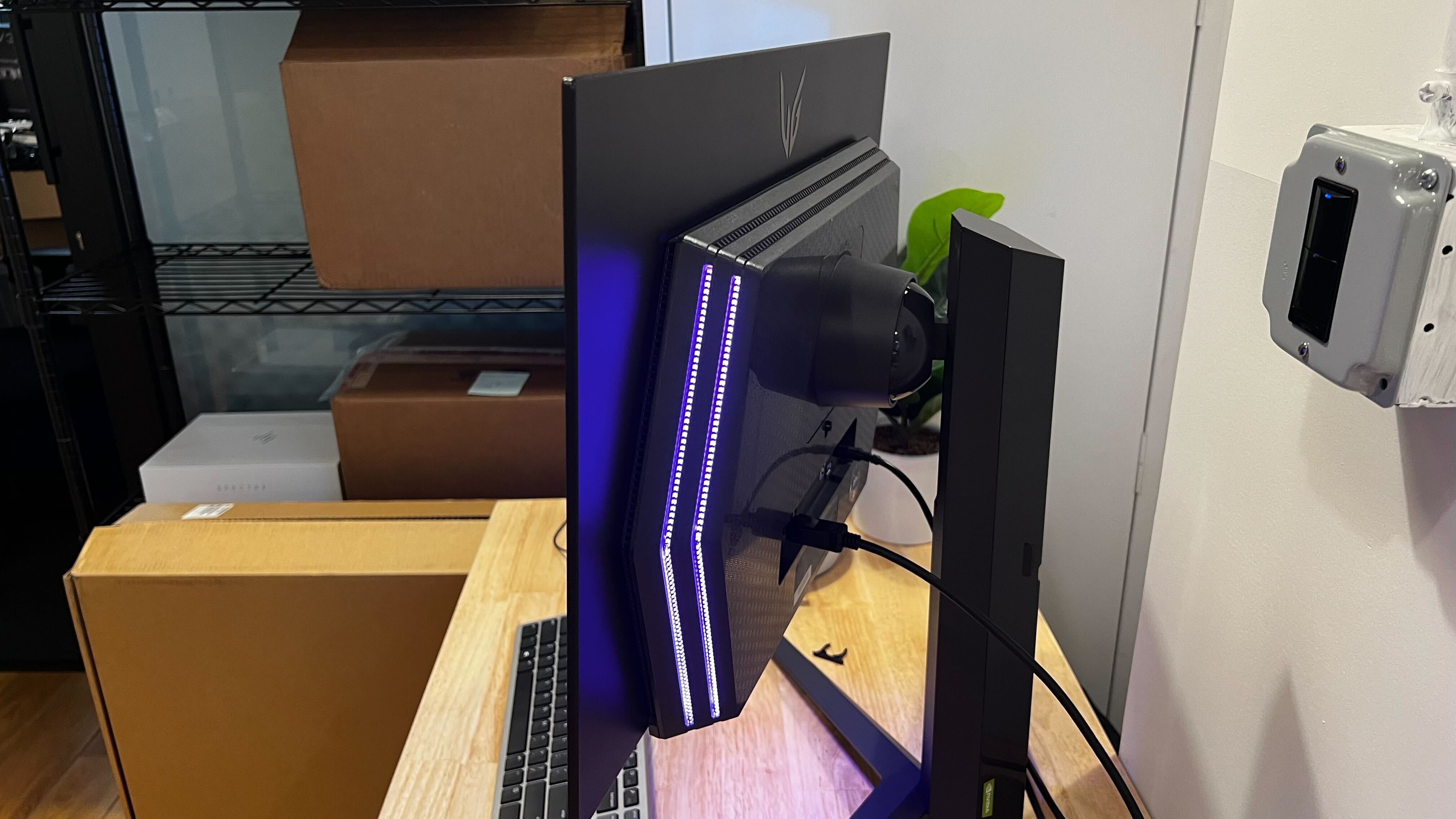
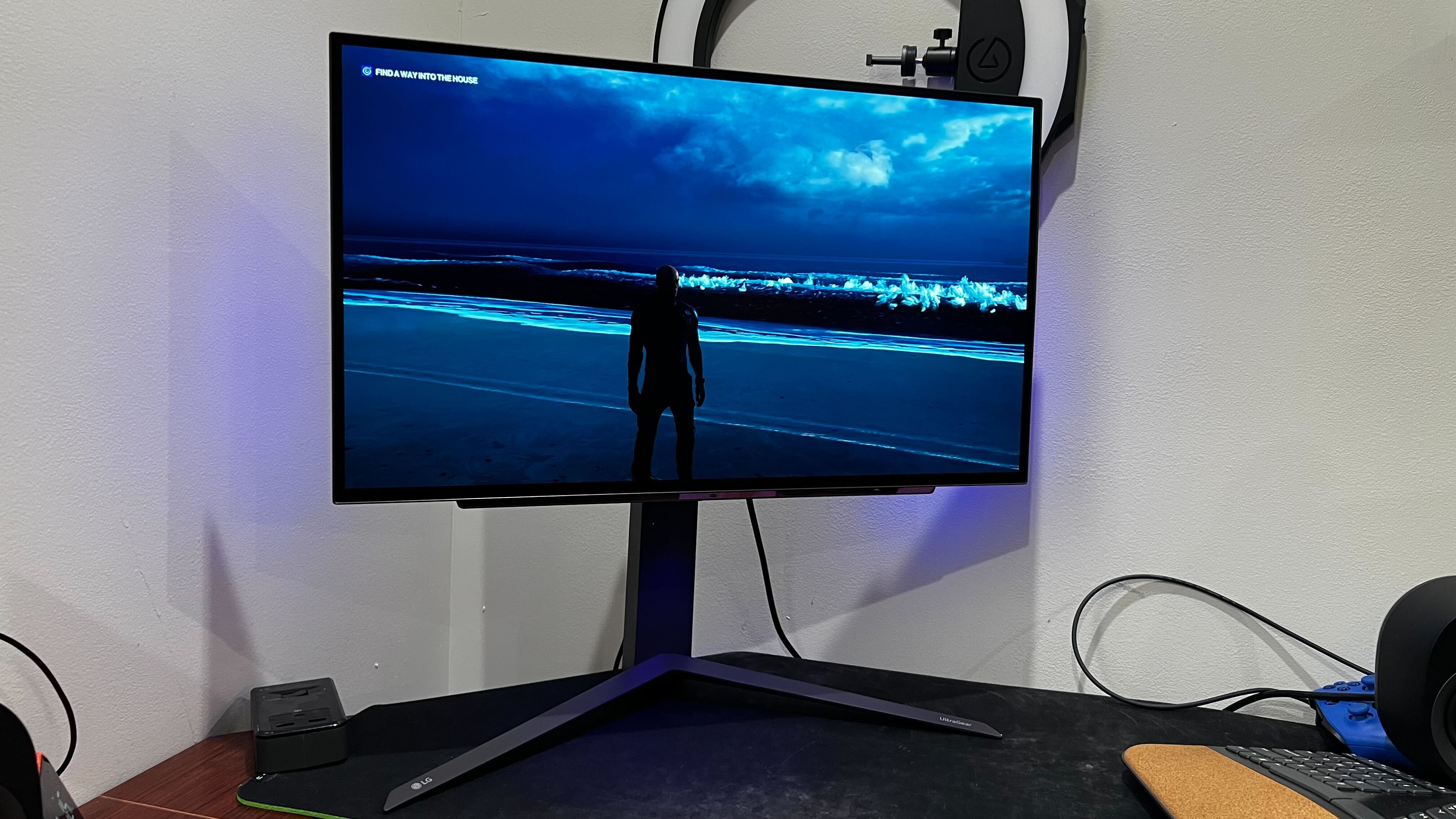
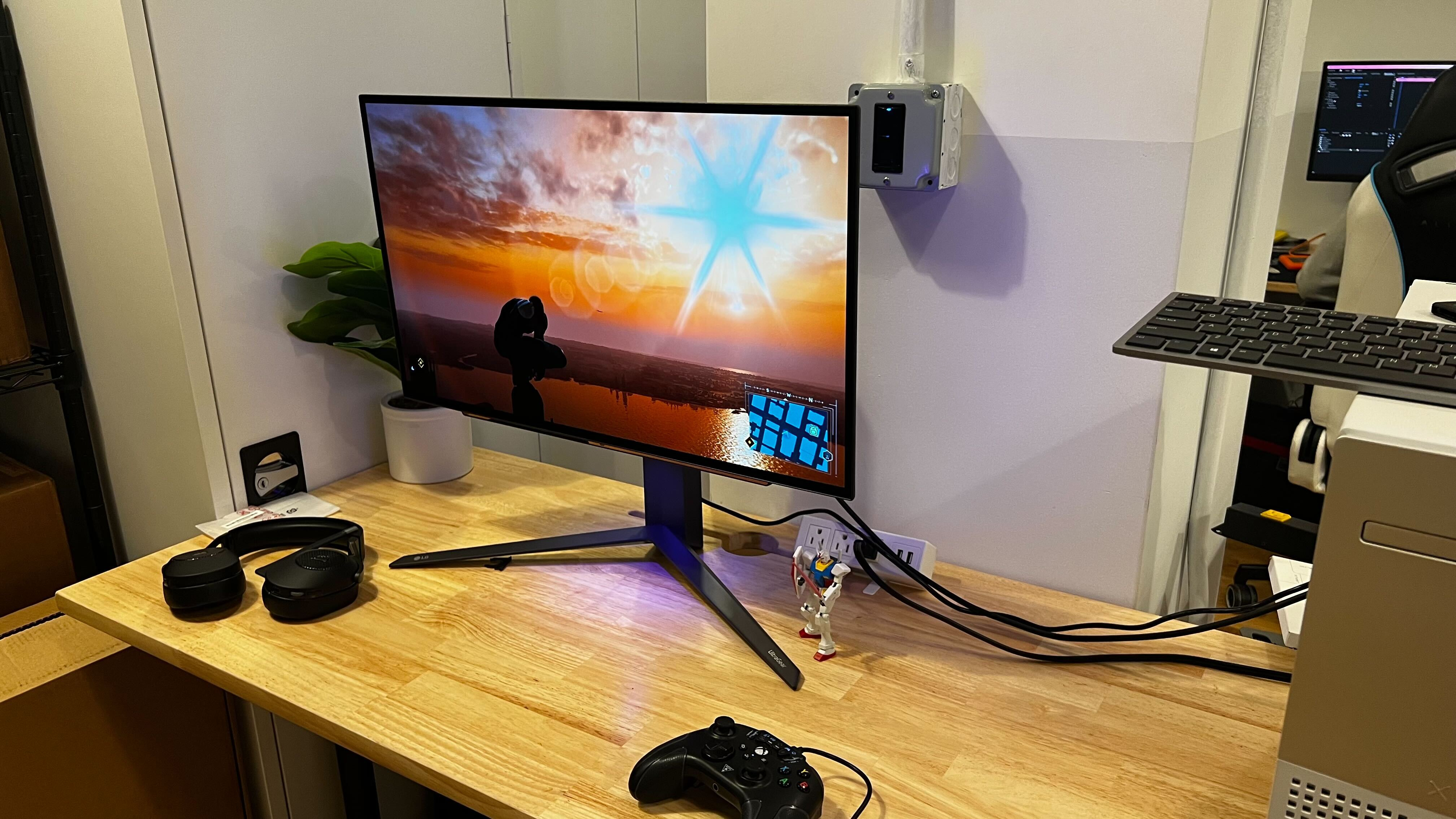
The UltraGear isn't too flashy but has side RGB light strips if you want to get fancy. The V-shaped stand doesn't take up a lot of space either, so if you want to set up a pair of these side by side, it won't look too bad. I really like the ergonomics of the LG. It tilts forwards and backward in all directions and can be raised high from 18 to 22 inches.
The LG UltraGear 27GR95QE-B is a heck of a monitor and the right choice if you're looking for speed and image quality for every type of game. While the brightness is a bummer, and the fact that you need the remote to mess up the settings, this is still one of the best looking and playing OLED gaming monitors that have come my way.
It will be an interesting next few months when we start seeing more of these OLEDs from other manufacturers like Asus, Acer, and Samsung. Will they be able to address the brightness issues? Can they compete on price since $1,000 seems like the floor, not the ceiling?
The LG 27GR95QE-B is a stellar display that makes 1440p again the PC gaming sweet spot due to its high 240Hz refresh rate and fantastic latency. However, its low overall brightness and lack of onboard settings keep it from being great.

Jorge is a hardware writer from the enchanted lands of New Jersey. When he's not filling the office with the smell of Pop-Tarts, he's reviewing all sorts of gaming hardware, from laptops with the latest mobile GPUs to gaming chairs with built-in back massagers. He's been covering games and tech for over ten years and has written for Dualshockers, WCCFtech, Tom's Guide, and a bunch of other places on the world wide web.
